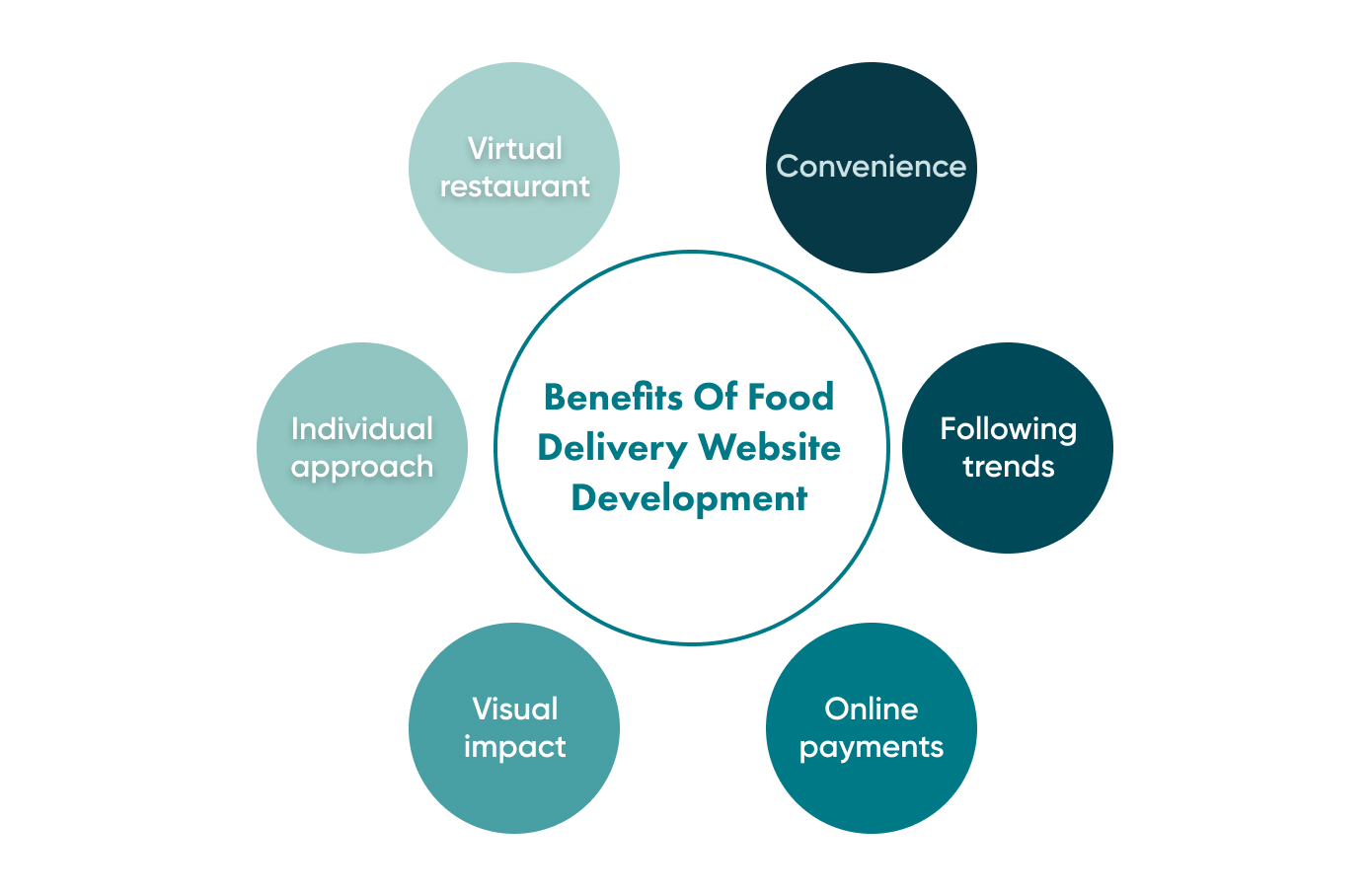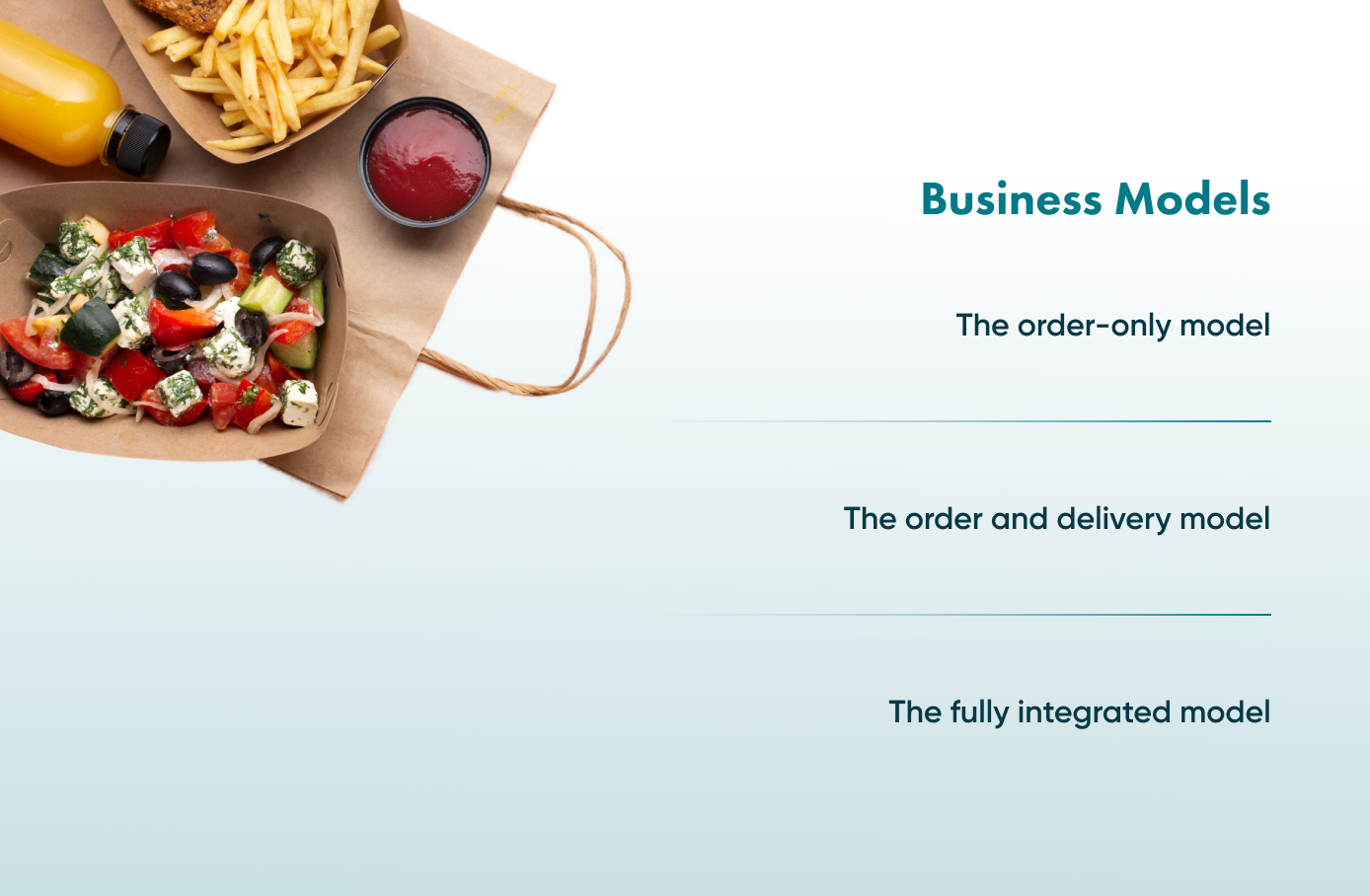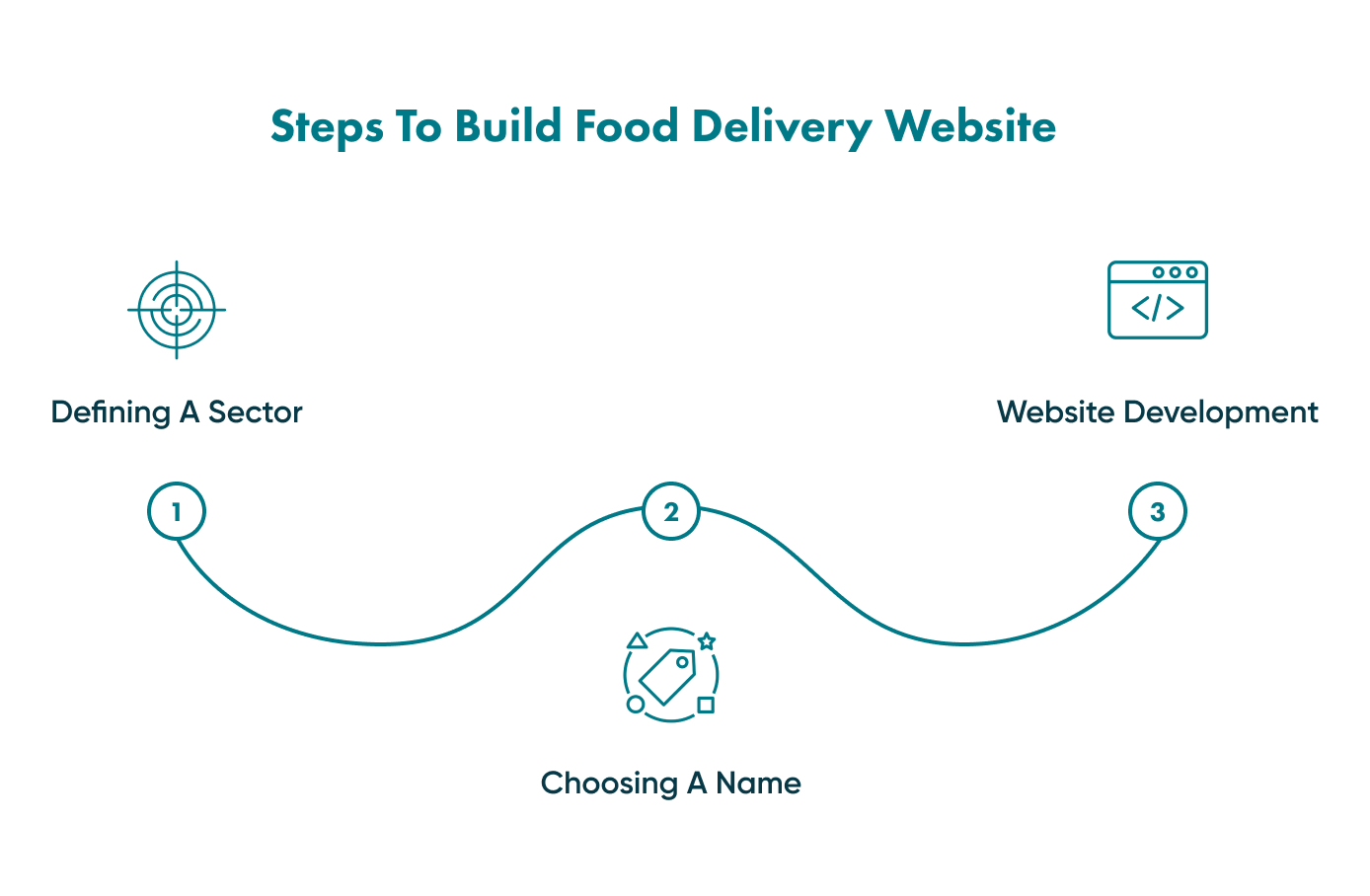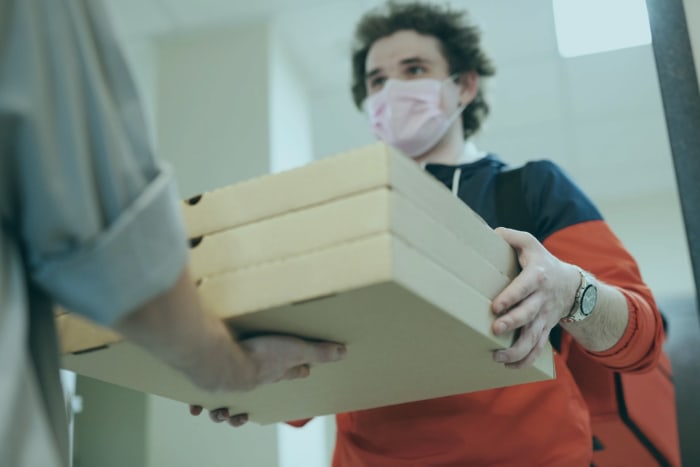How To Make A Food Delivery Website in 2022


More recently, remote food ordering and delivery have become a trend due to pandemic restrictions. Many people are either forced or seem to prefer to sit in the comfort of their homes and push a button to order food. Many businesses have noticed this trend and are trying to make it possible by creating more food delivery websites.
The development of a food delivery website requires appropriate knowledge about the market, business models, and other critical components including the advertising of such a venture. Some of which we will look at here.
Why Do You Need A Website For Food Delivery?
Our previous article about food delivery trends noted that food delivery is a vast market segment. People tend to use online services more to avoid face-to-face communication. Food ordering websites provide users with many features to order food remotely and receive it on their doorsteps. Therefore, we want to provide a guide on how to make an online food delivery website.

More specifically, a food ordering and delivery website has the following advantages:
Convenience
Accessibility and convenience are two primary factors why people use food ordering websites. Users can have food delivered via a few taps on their smartphone, tablet, or laptop. They save their time, your service delivers food on time, and, as a result, you have loyal customers.
Trends
This advantage is more appropriate for business owners. For example, if you plan to start a food delivery business, you can monitor recent food delivery trends (you can find them in the article we mentioned earlier) and use one or several trends in your industry. It will help you stay ahead of the competition.
Online payments
It is always possible to pay online and avoid cash exchange with a delivery person. However, payment with cash should also be available to let users choose the preferred payment option.
Online menu and images
Customers prefer to research a restaurant before they order food there. They want to know the cuisine type and menu the restaurant offers. Thus, attractive images and a detailed menu with ingredients for each dish attract customers and motivate them to order food.
Individual approach
Users can customise their order, add anything they want, and change a dish’s composition (remove/add specific ingredients). Your website for food delivery business can also offer some extra items to buy when the order is formed: for example, a sauce or beverage that fits the selected dish well.
Virtual restaurant
Food delivery trends show that virtual kitchen is a viral trend. It is another advantage you can use — solely offer food via delivery. You won’t have brick-and-mortar restaurants that people can visit. You provide cooking and delivery only. It is a valuable idea for a new business launch.
The development of a food delivery website is a complicated process. So let Go Wombat create it according to your requirements — contact us!
Online Food Delivery Business Models

Identifying a business model is necessary since it helps you choose the right direction for your food delivery website. There are three food delivery business models as follows.
The order-only model
You can create a food delivery website like “Grubhub” or “Glovo” platforms, which will be a mediator between customers and restaurants. The platform will connect customers with local restaurants and let them order food. Restaurants will deliver food on their own. What is your profit? Restaurants will pay a fixed commission per order. Your platform will be an additional promotion for other restaurants. That is why it is also beneficial for them.
The order and delivery model
This model is appropriate for restaurants that don’t want to hire in-house fleets since your platform will take orders from customers and organise delivery. UberEats is a good example of the model. Your profit also depends on the commission.
The fully integrated model
The last model includes all types of services — ordering, cooking, and delivery. You can use it if you have your own restaurant or virtual kitchen. Of course, you will need to invest more since this model requires additional expenses like salaries for staff and equipment purchases. Domino’s Pizza is a pizzeria chain that uses a fully integrated business model.
The Primary Features Of A Food Delivery Website
Food delivery website development should be implemented with different features in mind for both the customer and the restaurant.
For a customer interface
Registration
Registration must be as simple as possible. The sign-up process could be available via Google, Facebook, and other popular social media.
User profile
Customers create their profiles by adding a name, delivery address, phone number, email, and photo (optionally). Also, if users want to make cashless payments, they need to add payment card information.
Geolocation
This feature must be available for customers to help couriers find them quickly, and customers can see the precise location of a restaurant on the map. It is possible to include a proprietary map system, but with the convenience of linking with google maps, in our opinion, this is not the easiest or most cost-effective way.
List
If you create a platform based on the order-only model, or order and delivery, the website should have a list of available restaurants that you have an agreement with. Besides, there is an additional monetisation method — restaurants may pay an additional fee to be shown at the top of the list.
Search
Customers can use filters to search for the nearby restaurant according to the set parameters. Filters can be neglected, but they improve the customer experience and let them find what they exactly need.
Push notifications
Customers receive notifications when their order status is changed (accepted/rejected, in progress, delivered). Therefore, it is very convenient to see the situation with your order. Furthermore, notification or text message is more acceptable — they don’t distract customers’ attention if they are busy at the moment.
Food categories
If your restaurant offers various cuisines or your platform works with many restaurants, users can select a portion of food by category and type (like fast food, Asian or European cuisine, desserts, alcoholic beverages, and hot drinks).
Payment gateway
Online payment is a must-have feature to enable cashless payments for food delivery. Your website must have a proper protection level to ensure secure payments and prevent unauthorised access.
Order tracking
This feature is handy since it allows users to monitor the delivery process in a real-time mode. However, it means that couriers will need to have a relevant mobile app to send the GPS signal from their location.
Reviews/ratings
When users see reviews and ratings on different types of food, they become more loyal. They can read reviews and find out which dishes are the most popular (or vice versa), whether people are satisfied with your website, and other helpful information.
For a restaurant interface
Accepting/rejecting orders
A person in charge of the restaurant will receive orders and manage them. In case it is impossible to cook or deliver an order, a customer will receive a notification.
History of orders
Representatives may check the history of orders, how many of them are accepted or rejected, and other details.
Real-time analytics
This feature allows businesses to track total sales, and create analytical reports.
Financial statistics
Restaurants may check how much money they have earned on a specific day, week/month/year, and they can filter their statistics by income or spending.
Administration panel
The administrator of your website can add/edit/manage the content on your website, change payment methods, remove restaurants from the list which don’t extend the agreement, and handle other related tasks.
Optionally, your website may need a courier mobile app. This app should include a list of available orders, registration, real-time tracking and navigation, status update, and in-app messaging.
At Go Wombat, we use React Native to create hybrid apps which work well on several mobile operating systems.
Make a food delivery app and a website with Go Wombat — contact us!
Steps To Build Food Delivery Website

Defining A Sector
When you make a food delivery website, your first task is to research the market, identify your food delivery sector, monitor current trends, and analyse competitors and your target audience. In fact, you need to conduct the SWOT analysis (Strengths, Weaknesses, Opportunities, Threats) to identify all the strong and weak points of your future business. A detailed analysis of the market will certainly help you select the right business type.
Choosing A Name
An important rule — the name of your food delivery website must be catchy as well as memorable and original, of course. In addition, the name of your website must create relevant associations in users’ minds, so they already know what your website is about.
Website Development
Hiring a trustworthy software development company, such as Go Wombat, is only half the battle. Some business owners start using website builders and some out-of-the-box solutions to save money, but unfortunately, it is impossible to have a full-fledged website that meets your requirements. One of the more important factors would be the Quality Assurance of your website. The testing of a site both during the development and prior to launch is paramount.
If you want to remain competitive and provide unique website characteristics, you need to create a custom website and work with a food delivery website developer such as Go Wombat, which will use its experience and skills to develop your product. Our company can create your website from scratch.
We also recommend starting with a Minimum Viable Product (MVP) to test the idea and make sure that you follow the right path. We suggest you read an article about helpful tips to reduce MVP costs.
Also, for your information, remember to choose a domain for your website, and make some additional investments like hiring a photographer to take professional photos.
Critical Components Of A Food Delivery Website
Striving for a prosperous business and a good website can involve many tasks. Understanding what to do and when can be tricky without experienced guidance. That is why you should follow several practices which have stood the test of time.
A stunning design
You need to choose one style and adhere to it. At Go Wombat, our UI/UX designers will help you create an attractive and non-irritating website design for food delivery.
Intuitive navigation
When users enter your website, they shouldn’t have problems navigating through it. Its design must be transparent and straightforward, and it should have easy-to-find elements.
Calls To Action (CTA)
The website must contain even the simplest CTAs, but they must be. A good CTA directly impacts conversions on the website and future profits.
Responsive design
Remember that your website must be responsive, i.e., it should adapt to the screens of mobile devices. According to Restaurant Engine, about 80% of users order food delivery using their mobile devices. Therefore, your website should be displayed accurately on mobile devices if you want to the possibility of losing potential customers.
High performance
At Go Wombat, our Quality Assurance engineers may perform load testing of the product as an integral aspect of development to ensure that it is stable and won’t crash at the worst possible time. Furthermore, the website should load quickly, and ideally within 3 seconds.
Search Engine Optimisation (SEO)
SEO is necessary to put your website higher in search engines, leading to growing traffic and a larger number of customers. The website should use relevant keywords, be responsive, and contain SEO plugins.
Contact details
Users should be able to find contact details quickly. You can use a chatbot on the homepage, which will help customers obtain feedback promptly.
Subscription form
Your primary goal is to retain customers. Therefore, provide them with a visible subscription form where they can obtain up-to-date information about recent products and discounts.
Unlock Success with Premium Software Development
Contact us


Final Words
You can start working with Go Wombat to create the best food delivery website that will meet your requirements. Our development team will create your idea from the start, and continue maintaining it after release.
One of our main advantages is that we adhere to the Python/Django tech stack. This combination ensures that we can create a high-performance website that may use Machine Learning algorithms to improve customer experience.
Food delivery website development is a time-consuming process. Despite this, you may be confident with our unique communication approach. This ensures that clients are able to converse directly with the developers as well as designers. This promotes clarity and understanding and reduces confusion from idea to product. At Go Wombat we believe in working as a complete team.
Hire the Go Wombat company to implement your project — contact us!
How can we help you ?






